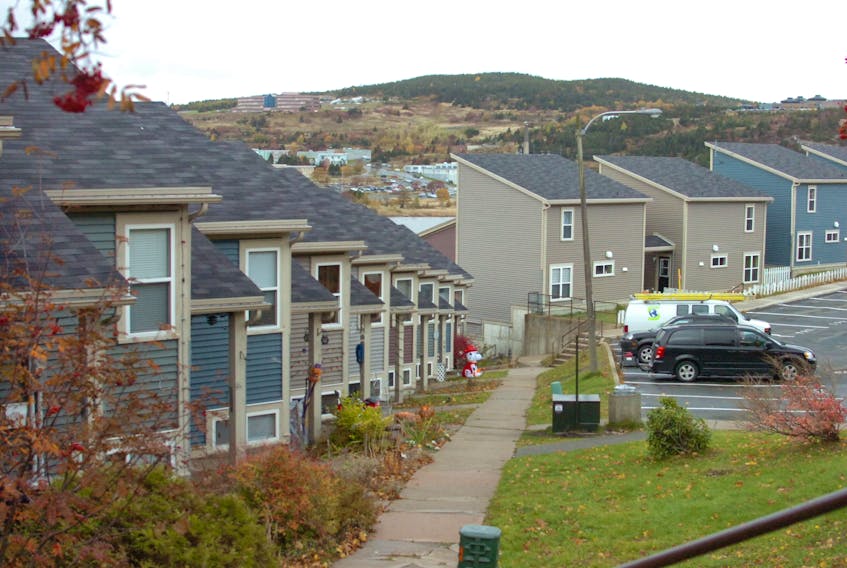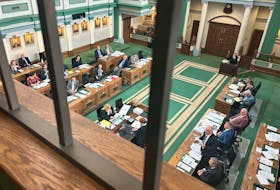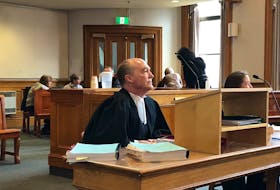Struggling to make ends meet with five children hasn’t been easy for Stephanie Thurston and her common-law husband.
As a provincial government employee, she isn’t earning big bucks, and her husband was recently laid off from his job as a construction general labourer. Even when he works, she said, his job is low-paying, seasonal and unpredictable.
When Thurston received a letter last week from the City of St. John’s informing her that the rent for their St. John’s Housing unit on Forest Road would increase in the new year from $730 a month to $1,588 a month, it was quite a blow.
“I was floored! I still am,” Thurston said Monday during a break from work. “My rent more than doubled! How is this possible?”
A letter sent to her and other residents of the housing unit this summer indicated that on Jan. 1, 2018, the city’s 35-year global operating agreement with the Canada Mortgage and Housing Corp. (CMHC) for the property, located at 179-229 Forest Rd., would expire. The city would assume ownership, with no financial subsidy or formal expectation of service or program delivery.
As the new sole owners, the city would reassess subsidized, low-end-of-market residents’ financial situations and require them to provide information, including proof of income and income tax information.
Thurston said when she first applied for St. John’s Housing several years ago, the application was based on her income alone, with her own three children, as she was single at the time. When she was approved in 2014, she said, she made it clear to the administration that she also had with her a common-law husband and his two children.
Her rent was set at $730 and her situation hasn’t changed since then, she said.
She had expected the rent to increase slightly, but never imagined it would jump this much.
“I can’t afford $1,588 with the money we make,” said Thurston, who had been considered low end of market. “They’ve got to be out to lunch. That $1,588 doesn’t even include (utilities), so I’m looking at $2,000 a month. That’s nuts. Where the hell am I getting that?”
She said she and her common-law husband are scrambling to find somewhere to live.
Thurston said the city should not force struggling families like hers out on the street. She said being approved for a St. John’s Housing home was a big reason why she has been able to manage financially.
The issue of the agreement expiration was discussed during a July 25 meeting of city council’s Community Services and Housing Standing Committee, which was chaired by then-deputy mayor Ron Ellsworth. It was then tabled at the Aug. 12 council meeting.
According to the report, when the agreement was signed in 1983, CMHC — with the administration passed over to the Newfoundland and Labrador Housing Corp. — had provided the city with a mortgage subsidy to help make the units affordable. This created an opportunity for the city to look at its housing stock in a way that it could never do before, the report said.
“One of the shortfalls in the delivery of the (low-end-of-market) program is that the city does not income test tenants after move-in. Once the agreements expire, the city could income test. This would ensure that those most in need of affordable housing are housed appropriately,” the report stated.
“It would also encourage those who can pay market rent to pay market rent.”
The current low-end-of-market program allowed the city to subsidize up to 15 per cent of the project. After tenants’ income is verified, they will pay 25 per cent of their income in rent.
Three other projects — 15-39 Cuckhold’s Cove Rd., Infill 1982 and Rawlins Cross — would also see their agreements expire.
“These agreements were the city’s first commitment to affordable housing,” the reported stated.
Newly elected Ward 2 Coun. Hope Jamieson said she understands it will be a huge adjustment for some residents, but the 25 per cent rate is still priced well below what the United Nations says is appropriate for housing.
“The reason (council) decided to do income testing is to make sure people are where they should be,” Jamieson said.
“These are not non-profit housing (units). The money we take in (from these units) will go towards non-profit housing for those who really need it.”
But with five kids to feed and a tight budget, Thurston can’t understand how the city can force a family like hers out the door.
“What a thing to be faced with two months before Christmas,” said Thurston, who said many other residents have moved out as a result of the rent increases.
“I’m completely stressed out.
“The city says they’re all for affordable housing, but it’s like I’m being penalized for working, while people who don’t work get all the breaks. It’s not right.”
Twitter: TelyRosie









